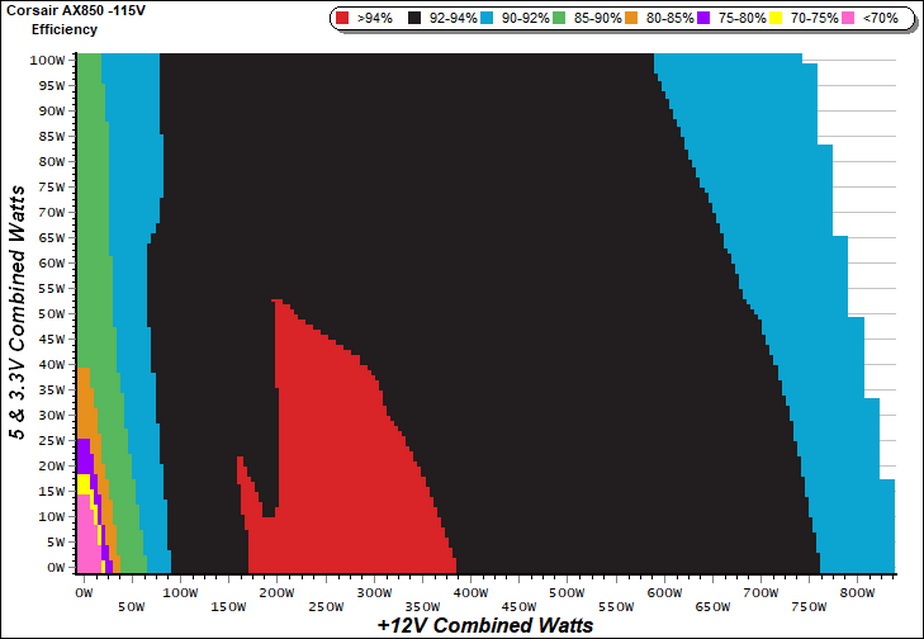Corsair AX850 PSU Review: Top Performer and Dead Silent
Why you can trust Tom's Hardware
Protection Features, DC Power Sequencing, Cross-Load Tests & Infrared Images
Protection Features
Check out our PSUs 101 article to learn more about PSU protection features.
| Protection Features | |
| OCP | 12V: 98.4A (140.57), 12.201V 5V: 41.2A (206%), 5.048V, 57.91mV Ripple 3.3V: 38.5A (192.5%), 3.367V 5VSB: 4.2A (140%), 4.858V |
| OPP | 1191.5W (140.18%) |
| OTP | ✓ (180°C @ 12V Heat Sink) |
| SCP | 12V: ✓ 5V: ✓ 3.3V: ✓ 5VSB: ✓ -12V: ✓ |
| PWR_OK | Proper Operation |
| NLO | ✓ |
| SIP | Surge: MOV Inrush: NTC Thermistor & Bypass Relay |
The over current protection (OCP) on the minor rails is crazy high, leading to excess ripple on the 5V rail with more than 41A load! There is no point in such high OCP triggering points on the minor rails. At 5VSB, OCP is set at 140% which is not that high, but still the voltage drop is notable so it should be set lower, at 130%.
The over power protection (OPP) is notably higher than 130% of the max-rated-output, which we consider an ideal threshold.
DC Power Sequencing
According to Intel’s most recent Power Supply Design Guide (revision 1.4), the +12V and 5V outputs must be equal to or greater than the 3.3V rail at all times. Unfortunately, Intel doesn't mention why it is so important to always keep the 3.3V rail's voltage lower, than the levels of the rest two outputs.
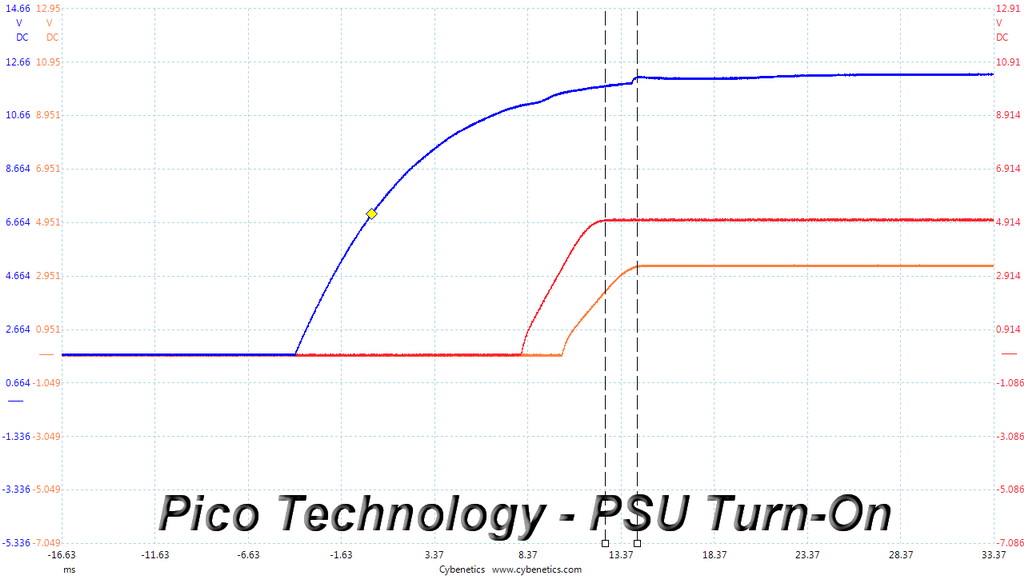
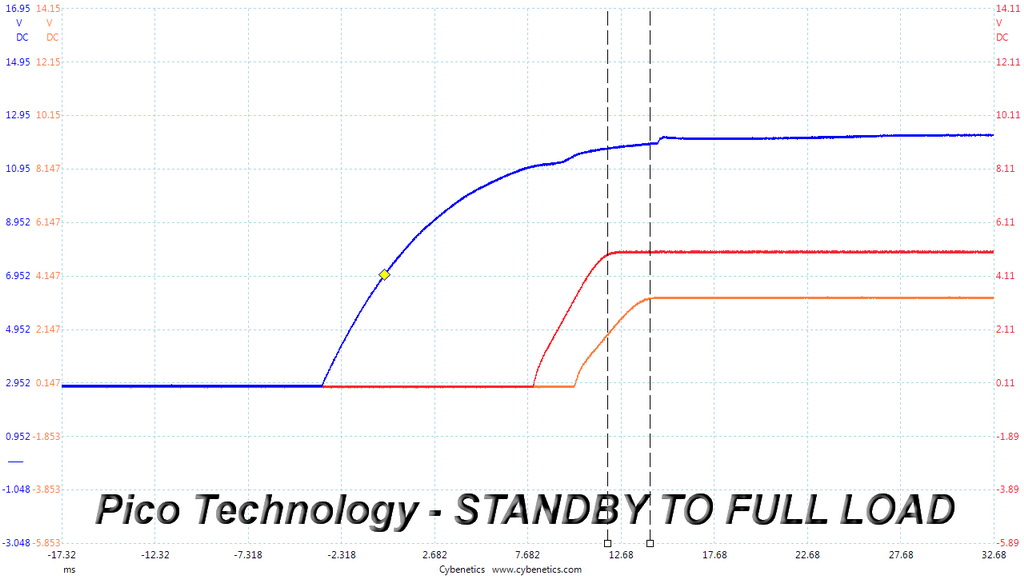
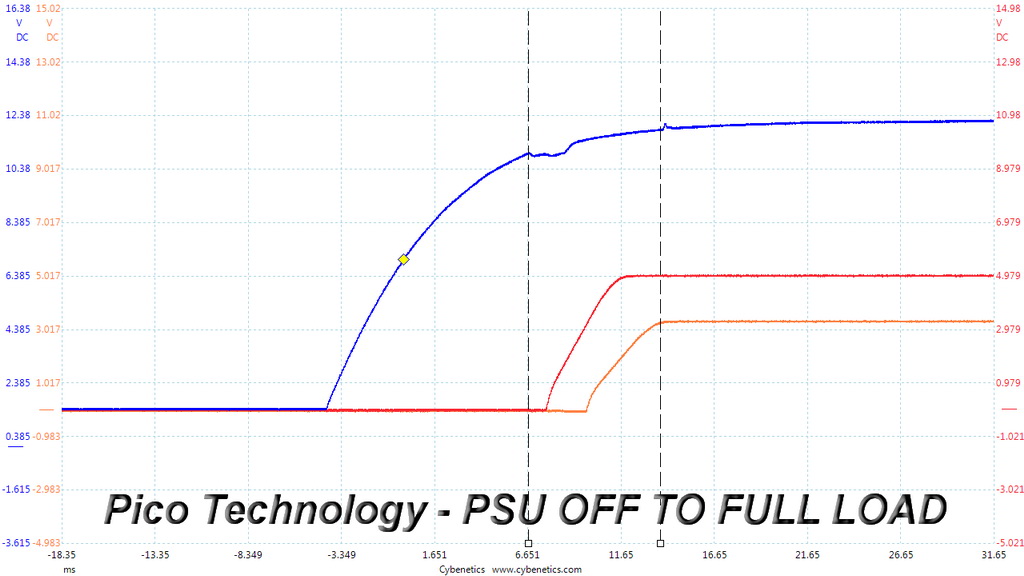
The 3.3V rail is always lower than the other two (+12V and 5V), so the PSU passes with flying colors those tests.
Cross Load Tests
Get Tom's Hardware's best news and in-depth reviews, straight to your inbox.
To generate the following charts, we set our loaders to auto mode through custom-made software before trying more than 25,000 possible load combinations with the +12V, 5V, and 3.3V rails. The deviations in each of the charts below are calculated by taking the nominal values of the rails (12V, 5V, and 3.3V) as point zero. The ambient temperature during testing was between 30°C (86°F) and 32°C (89.6°F).
Load Regulation Charts

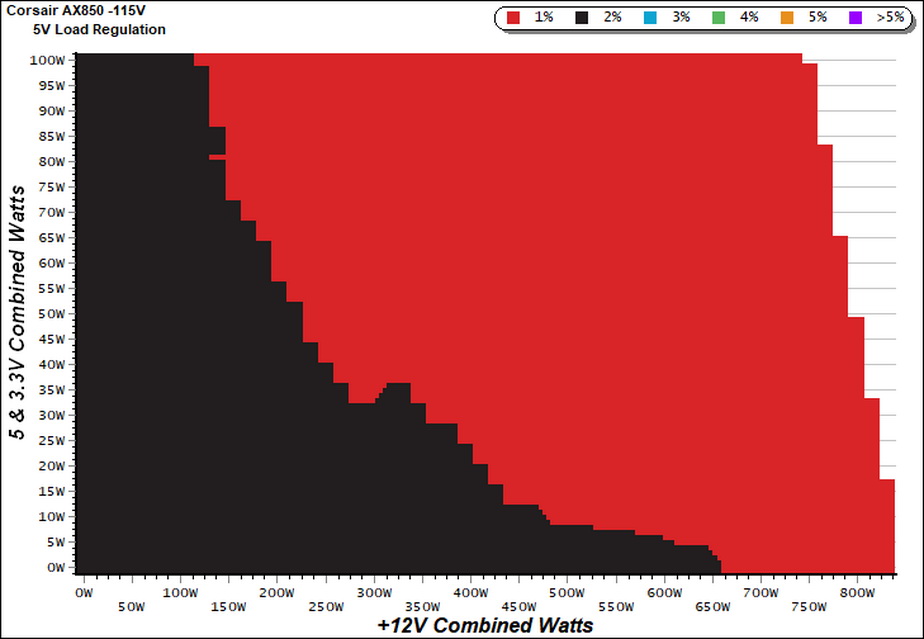

Efficiency Chart
For a quite large region, the PSU achieves higher than 94% efficiency levels. Moreover, from around 90W load to 760W the unit's efficiency exceeds 92%, even with increased load on the minor rails.
Ripple Charts
The lower the power supply's ripple the more stable the system will be and less stress will be also applied to its components.
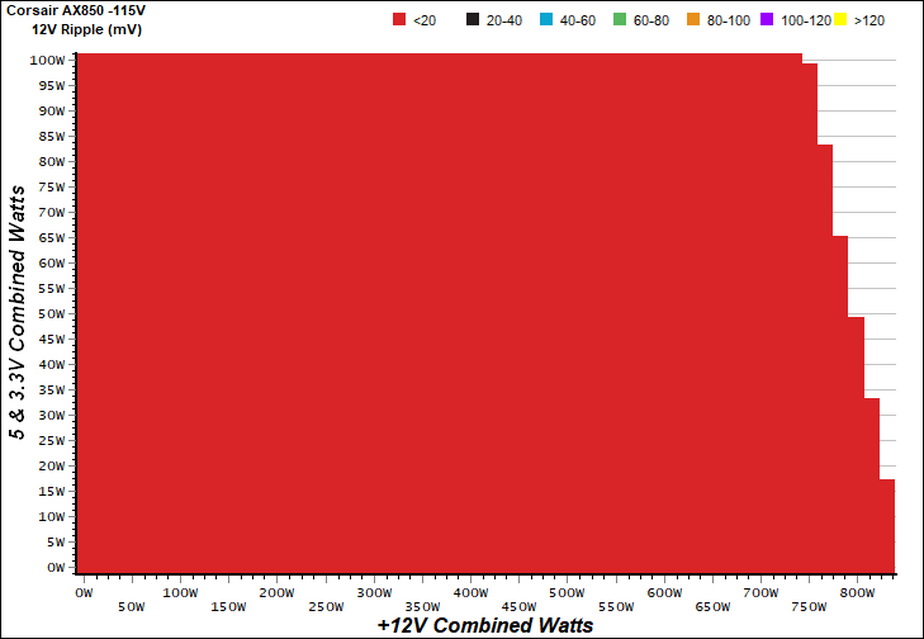

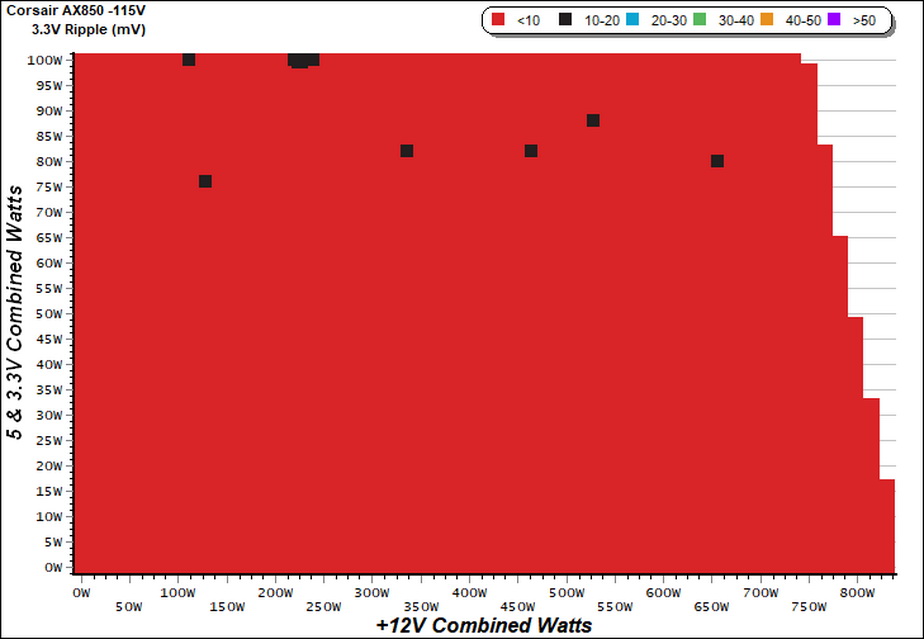

Infrared Images
We apply a half-load for 10 minutes with the PSU's top cover and cooling fan removed before taking photos with a modified FLIR E4 camera able to deliver an IR resolution of 320x240 (76,800 pixels).
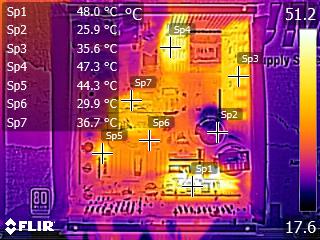

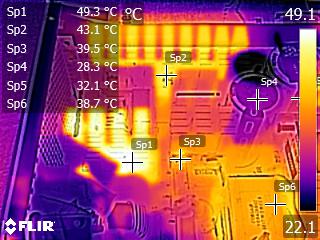
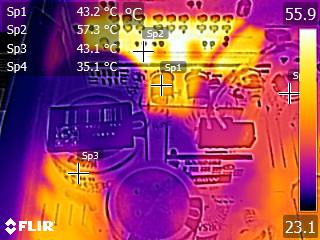


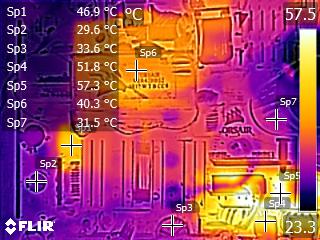

As you can see in the IR shots above, the temperatures at the PSU's internals are kept low thanks to the efficient platform.
MORE: Best Power Supplies
MORE: How We Test Power Supplies
MORE: All Power Supply Content
Current page: Protection Features, DC Power Sequencing, Cross-Load Tests & Infrared Images
Prev Page Load Regulation, Hold-Up Time, Inrush Current, Efficiency and Noise Next Page Transient Response Tests, Ripple Measurements and EMC Pre-Compliance Testing
Aris Mpitziopoulos is a contributing editor at Tom's Hardware, covering PSUs.
